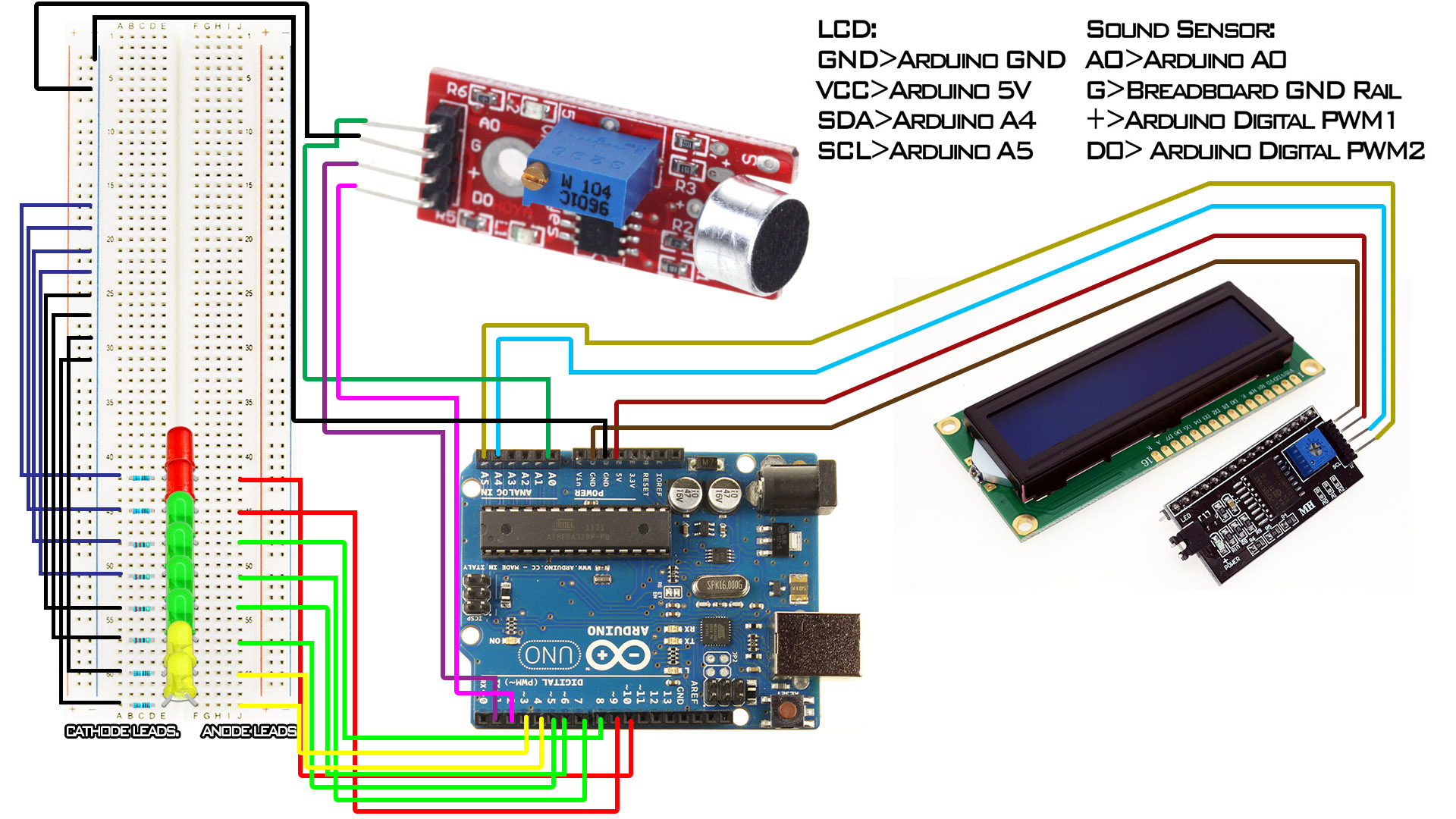This project is about monitoring the sound level data that is being released, produced or outputted(?) by the speakers.
Aaah... this is a product of curiosity and boredom.
I used a [KY-038] microphone sound sensor module to pickup the values that I then gathered from the Serial Monitor, transferred to a spreadsheet, arranged to ascending order then chose the values that occurs more repetitively than others or just the ones that I like.
I picked a number of variables from the lowest range to the mid and high range.
The variables from the lowest range of values will activate the Yellow LEDs, the mid range ones will activate the Green LEDs and the high range ones will activate the Red ones.
The LEDs will be activated or turned on when the certain sensorValue is reached or detected by the sound sensor.
I also included an optional LCD to view the values in real time just for fun.
I basically just upgraded this code
The LCD Codes are from my previous project
And Username MAS3's Comment here
I encountered a problem where the data that is appearing on the LCD have some leftover digits from the past sensorValue. Like, when the current value is supposed to be 619 which is what is on the Serial Monitor, but it becomes 6194, because the past value was 1234.
Download the .cpp and .h files here.
******************************************************************************
Social Media Links To Follow (I mean, if you want to):
Facebook - https://fb.me/HeathenHacks
Twitter - https://twitter.com/HeathenHacks
Instagram - https://instagr.am/HeathenHacks
******************************************************************************
https://drive.google.com/file/d/15NRocdFjr-DG7Hu2zyyvSvRz7bcncvU7/




_ztBMuBhMHo.jpg?auto=compress%2Cformat&w=48&h=48&fit=fill&bg=ffffff)

















_3u05Tpwasz.png?auto=compress%2Cformat&w=40&h=40&fit=fillmax&bg=fff&dpr=2)
Comments